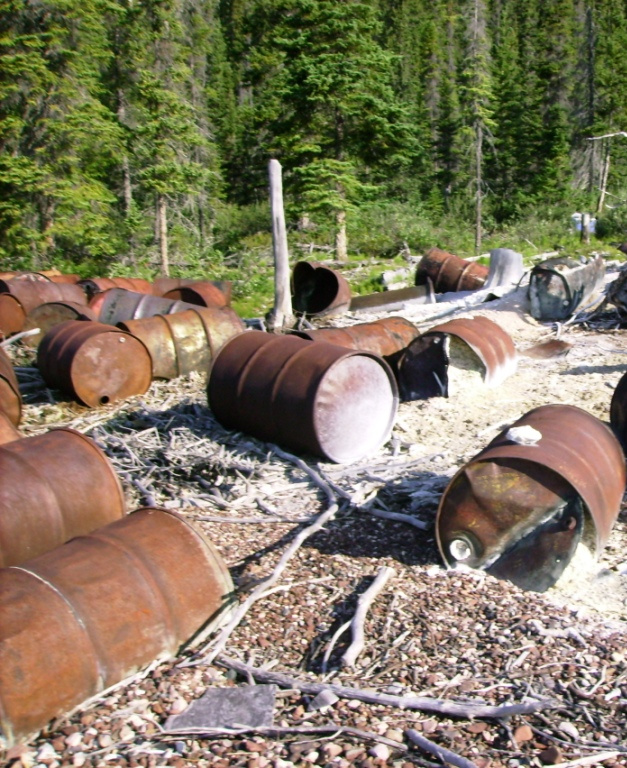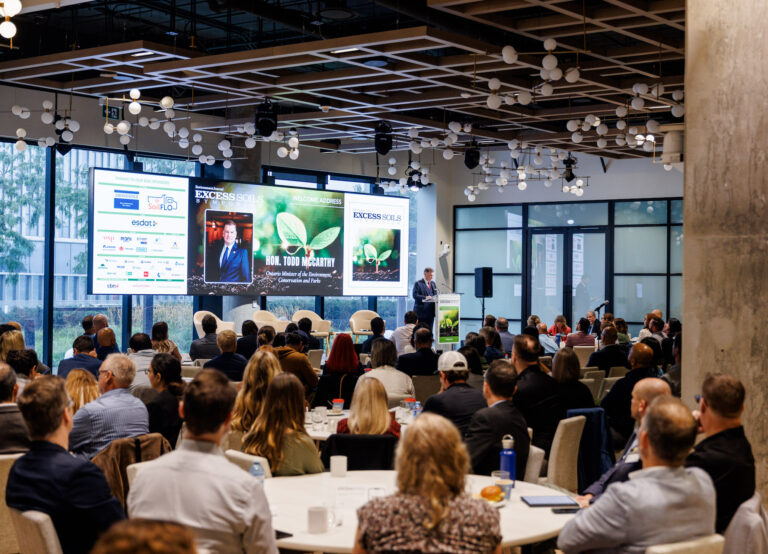Tuesday, October 7, 2025
Proponents of development projects have a statuary and legal requirement to undertake public consultation and if necessary, with Indigenous groups in order to obtain a project approval. These consultations take the form of public meetings at which the proponent and its consultants outline the proposed project. The anticipated residual environmental and socioeconomic impacts of the project, and the mitigative measure to achieve the residual impacts are also presented and feedback solicited.
Regulators are required to incorporate the results of such feedback into their formal review process, and the subsequent recommendations on project approval status and/or conditions. Subsequent to these public meetings government may required a formal regulatory hearing at which directly impacted stakeholders and special interest groups (intervenors) have the opportunity to question the proponent, and its consultants about any aspect of the proposed project.
Public meetings and regulatory hearings require environmental impact assessment (EIA) subject matter experts (SMEs) to communicate complex issues, concepts and ideas unfamiliar to the public. In some cases, proponent’s lawyers train SMEs on how to be effective witnesses in regulatory hearings. However, the key to being an effective “witness” is the SME’s ability to communicate clearly, concisely and respectfully. It is also important that the SME has built public credibility and trust based on communications during public meetings.
There have been lessons learned in SME communication with the public, based on decades of professional experience. This experience has involved acting as an SME on behalf of project proponents and appellants in public meetings and formal regulatory hearings. Public meetings have ranged from small informal gatherings in local churches, to larger formal evening public interactions in a school coupled with SMEs hosting an afternoon ‘career fair’ for the school’s students. Regulatory hearings have encompassed legal requirements at the federal, provincial and municipal levels. Projects have ranged from small municipal landfills in Alberta to a world scale municipal solid waste landfill in Hong Kong, the development of two major petrochemical plants, the remediation of contaminated sites, and an industrial rail line.
Understand and respect your audience
We all have conscious and sub-conscious bias regarding a person or group’s ethnicity, social class, perceived level of education, and understanding of issues. However, to the extent possible, one should not allow these biases and preconceptions to influence the way in which you interact with your audience.
In 1987 the senior partner of a British consulting company in Hong Kong attended a public meeting in a relatively remote rural traditional Chinese village adjacent to a proposed landfill development near the Chinese border. At the meeting, working through an interpreter, he advised the villagers that they had nothing to worry about. The landfill liner, leachate collection and treatment systems were going to be state-of-the-art, and built using the latest high-tech materials. An older man in traditional Chinese dress made a comment in Cantonese and the whole room erupted in laughter. When asked what the old man had said, the interpreter replied “that’s what they said about the Challenger space shuttle didn’t they, and look what happened to that.” It blew up on take off the year before. The village may have been remote, but every house had a small satellite dish on the roof. The villagers were very aware of what was going on in the world. With that one comment from the audience credibility was lost.
Lesson: Never underestimate your audience’s level of knowledge and understanding.

Prepare thoroughly
An SME needs to be fully versed in the subject matter of the area of expertise, whether acting on behalf of the proponent or the appellant(s). When acting on behalf of the proponent, thorough preparation involves anticipating questions, and framing responses. This is often done under the guidance of the proponent’s lawyer. Intervenors typically retain SMEs to challenge a project and its anticipated impacts.
It is important to understand and appreciate that an SME acting on behalf of an intervenor is subject to the same rules of professionalism as a SME acting for the project proponent.
The purpose of the consultation process is to arrive at a balanced presentation of the facts, so that regulators can make an informed recommendation as to the project’s merits. Thorough preparation requires the SME to demonstrate awareness of the key issues and empathy with those impacted by these issues. Furthermore, preparation should focus on the pros and cons of the key issues, and how the project design addresses each.
At a hearing in southern Alberta, an SME was being questioned by the intervenor’s lawyer. At one point the lawyer held up the proceedings as he was shorting through his papers trying to find something. The SME quietly said: “I assume that you are now wanting to question me about the apparently anomalous water levels in borehole 10.” The lawyer responded: “Yes, that is right. My word you really know your stuff.” With that commendation from the intervenor’s lawyer, the SME and project had gain incredible instant credibility.
Lesson: Thorough preparation involves demonstrating an understanding and awareness of the key issues, and displaying empathy with those impacted by the project.
Know your limits
A consultant’s EIA project manager usually has a working knowledge of the results of the EIA, the proposed mitigation measures, and the anticipated residual impacts. Consequently, as leader of the EIA team, the EIA consultant’s project manager often takes a lead role in, and responds to the first line of questioning in public meetings and regulatory hearings.
It is important that project managers understand and appreciate the limits of their knowledge in specific areas, and defer questions that are beyond their level of expertise to the appropriate SME. Furthermore, SMEs, whilst being very knowledgeable in their subject area, do not, and cannot know everything. Project managers and SMEs should be open and honest, and admit when they do not know something, or do not have an answer to a question.
Lesson: Knowing and acknowledging your limits will increase, rather than decrease your credibility.
Value of listening
Communication is a two-way process. It involves talking and listening. In public meetings, for an SME, listening can be more important, and have more value than talking. If the public has a concern or a comment or a question, SMEs should be respectful and listen to them. Active listening is the best way to earn the trust and respect of a person. You do not have to agree with what a person is saying, but it is important that you see the issue from their perspective. Furthermore, through listening, you may learn something.
An SME spent several weeks developing a regional hydrogeological model to investigate the interaction between a large lake and the groundwater regime. The model indicated a strong component of groundwater flow into the lake, with the result that water level in the lake would be unlikely to fall below a certain level. The SME presented this information at a public meeting in a small community hall in Alberta. An older lady commented that a good friend of hers was a local Indigenous elder. The elder had often told her that his was a special lake because the creator would never let the lake go dry. By listening, the SME had western science validated by local traditional knowledge.
Lesson: Listening can and will increase credibility, especially when input received is subsequently incorporated into project design, operation and monitoring.
Use simple language
SMEs communicate with each other using technological and scientific jargon and acronyms. However, appearing at public meetings and regulatory hearings requires the effective communication of complex, unfamiliar problems and issues with the general public.
At a public meeting in a rural community hall in Alberta, the proponent’s SME, an academic from the United States, opened by saying “I have a presentation here this evening. You are probably not going to understand it, but I am going to give it anyway.”
In contrast, after returning from a series of public meetings in remote communities in the Northwest Territories, the proponent’s project manager commented “(SME’s name) was absolutely stellar. Her ability to communicate complex toxicological and human health issues in language that someone with only a grade 6 education can understand is amazing”.
Lesson: Effective communication is a two-way exchange of information, intentions and emotions. It involves transmitting a message, and receiving an acknowledgement that the message has been received and understood by the intended audience.

Keep calm
Public meetings and regulatory hearings can become emotional and angry. This anger can be directed at the SMEs, and can involve colourful personal language. The SME’s professional and personal integrity may also be called into question by those opposed to the project. It is important to understand that while these attacks may seem to be personal, they are often a manifestation of individuals’ frustration with the project, the proponent, and the process. Rather than responding and trying to defend oneself, it is essential to remain calm, professional and maintain one’s dignity. Formal regulatory hearings involve opposing legal council acting on behalf of those intervenors who may have legitimate concerns about a proposed project. One of the first things to be tested in a hearing is the credibility of the SMEs, and this test must be passed.
At a development appeal board hearing in Alberta, the municipality’s SME spent the morning presenting material and responding to questions. The hearing broke for lunch. The SME, the municipality’s lawyer and chief engineer started to leave the room. One person appeared to be very agitated and approached the group shouting “so Mr. Engineer you think you are so bloody smart.” As the SME moved to engage with this agitated attendee, the lawyer tapped him on the shoulder and said “Keep looking straight ahead and keep walking towards the door.” This course of action defused a potentially difficult situation.
Lesson: Do not take negative comments personally. Keep calm, maintain your composure, and carry on.
Key takeaways
An SME must be credible in the eyes of the audience, and be an effective communicator. Credibility is based on being trusted, and believed. Credibility is built throughout the public consultation process by understanding and respecting your audience, preparing thoroughly, knowing your limits, and listening. Effective communication is about more than just conveying information. It involves talking, listening, observing and empathizing. Listening and talking are the most important. Effective communicators listen actively and empathetically, and they talk using simple language. These are skills that can, and need to be practiced and mastered by SMEs.
In building credibility, and communicating effectively, the persona that a SME presents is also important. Expertise needs to be projected through unbiased quite confidence together with honesty, empathy, humility and the ability to stay calm when personally and/or professionally challenged. The focus of an SME should not be on how much you know, but on how you are able to responsibly, credibly and effectively communicate what you know.
Finally, SMEs need to be aware that there are three different audiences that they are communicating with at public meetings and regulatory hearings. There are the regulators, who must consider the ‘testimony’ of the SME for accuracy, technical explanation, context, and clarity of often complex subjects. There is the public, who are looking for open, honest, believable responses to key questions, together with an empathy for the concerns that have been raised. There are the legal councils acting on behalf of both the proponent and the intervenors. This last audience can have a significant role in shaping the perception of the SME to both regulators and the public. However, legal councils are not SMEs, and the distinction must be made clear in the way the SME conducts their self and responds to legal council’s questions.

Bryan Leach is a Professional Engineer in Alberta, and a Chartered Engineer in the UK. In addition to his technical training, he has a Certificate in Adult and Workplace Learning, and a Masters in Continuing Education. He has over 40 years of professional experience, much of which has involved managing multi-disciplinary project teams undertaking major environmental impact assessments. He has lived and worked in England, Hong Kong, Canada and Italy. During his career, Bryan has published papers and articles on a range of technical and management subjects and has been a speaker to technical organizations in Canada and abroad.
Note: The author acknowledges the contributions of David Kerr through his review of the draft, and his advice and guidance on its finalization.
Featured image credits: Getty Images












